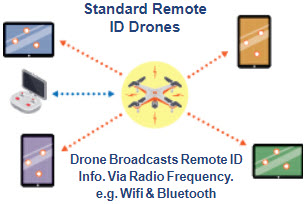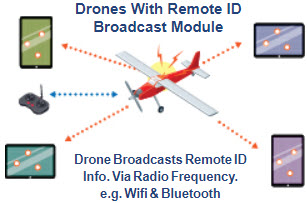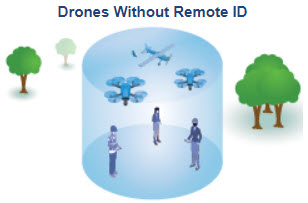Regulatory Requirements
The following information is from the AMA website and can be viewed there at https://amablog.modelaircraft.org/amagov/2023/02/15/getting-started-in-the-hobby/
The article was written on 2/15/2023 with credit given to the author, Holly Silvers (modifications on Remote ID section to fit our club's situation).
***NOTE*** - Please pay attention to the TAKEAWAY section at the bottom for the short version if you want to get straight to the point.
USC 44809 RULES FOR RECREATIONAL FLIERS
- Fly only for recreational purposes.
- Follow AMA's Safety Guidelines
- Fly your aircraft within your visual line-of-sight (VLOS) or within the VLOS of your spotter.
- Give way to, and do not interfere with, any manned aircraft.
- Obtain airspace authorization before operating in controlled airspace. Receive this authorization via LAANC or the DroneZone. Contact amagov@modelaircraft.org if you fly at an AMA chartered club’s flying site and need to create a letter of agreement with your local Air Traffic Controller.
- Fly at or below 400 feet in uncontrolled (Class G) airspace. For help understanding the differences in types of airspace, click here.
- Take The Recreational UAS Safety Test (TRUST) and carry proof of test passage. The test can be taken for free at www.modelaircraft.org/trust.
- Have a current FAA registration and mark the exterior of your aircraft with the registration number. To register with the FAA, visit faadronezone-access.faa.gov.
- For help registering with FAA, use AMA's step-by-step guided walkthrough.
- FAA registration costs only $5 and needs renewed every three years.
- You do not need to register your aircraft if it weighs at or less than .55 pounds (250 grams).
REMOTE ID
3 Ways Drone Pilots Can Meet Remote ID Rule

Drone Remote Identification
- Remote ID capability is built into the drone
- From takeoff to shutdown, drone broadcasts:
- Drone ID (Remote ID-compliant serial number)
- Drone location and altitude
- Drone velocity
- Control station location and elevation
- Time mark
- Emergency status

Drone Remote Identification
- Remote ID capability through module attached to drone
- Limited to visual line of sight operations
- From takeoff to shutdown, drone broadcasts:
- Drone ID (Remote ID-compliant serial number)
- Drone location and altitude
- Drone velocity
- Takeoff location and elevation
- Time mark

FAA-Recognized Identification Area (FRIA). BARKS has applied to be a FRIA
- Drones without Remote ID can operate without broadcasting
- Drones without Remote ID must operate within visual line of sight and within the FRIA
- Anyone can fly there, but FRIAs can only be requested by community-based organizations and educational institutions
TAKEAWAY
This might seem like a lot of information to remember. But if you remember these four main takeaways, you will be all set to fly safely in the airspace:
- Follow AMA Safety Guidelines AMA's Safety Guidelines
- Complete TRUST www.modelaircraft.org/trust.
- Register with the FAA faadronezone-access.faa.gov
- Comply with Remote ID beginning on March 16, 2024. If needed, purchase the Remote ID from your favorite hobby store.
To remain current with the most recent government-related news, regularly visit AMA Government Affairs blog. If you have any further questions or concerns, contact the Government Affairs department at (765) 287-1256 or amagov@modelaircraft.org.

